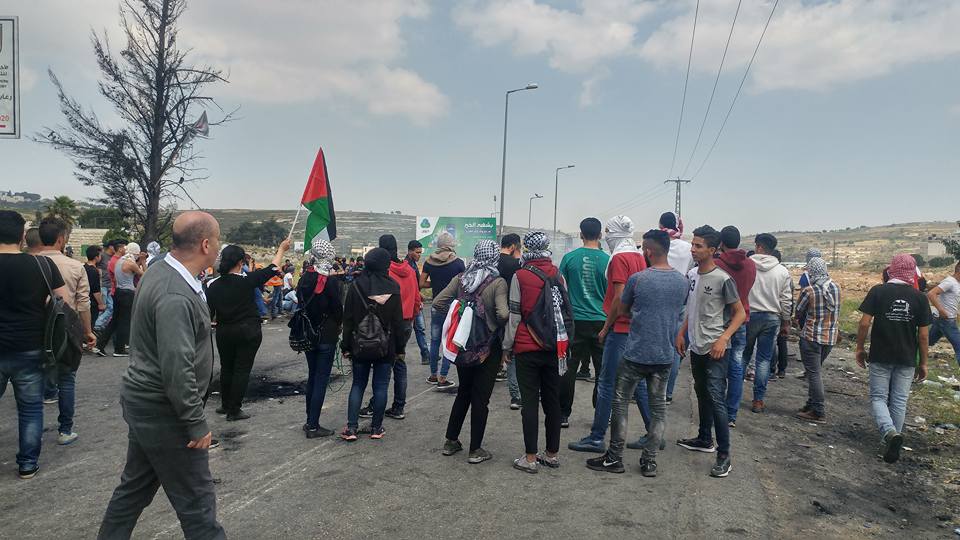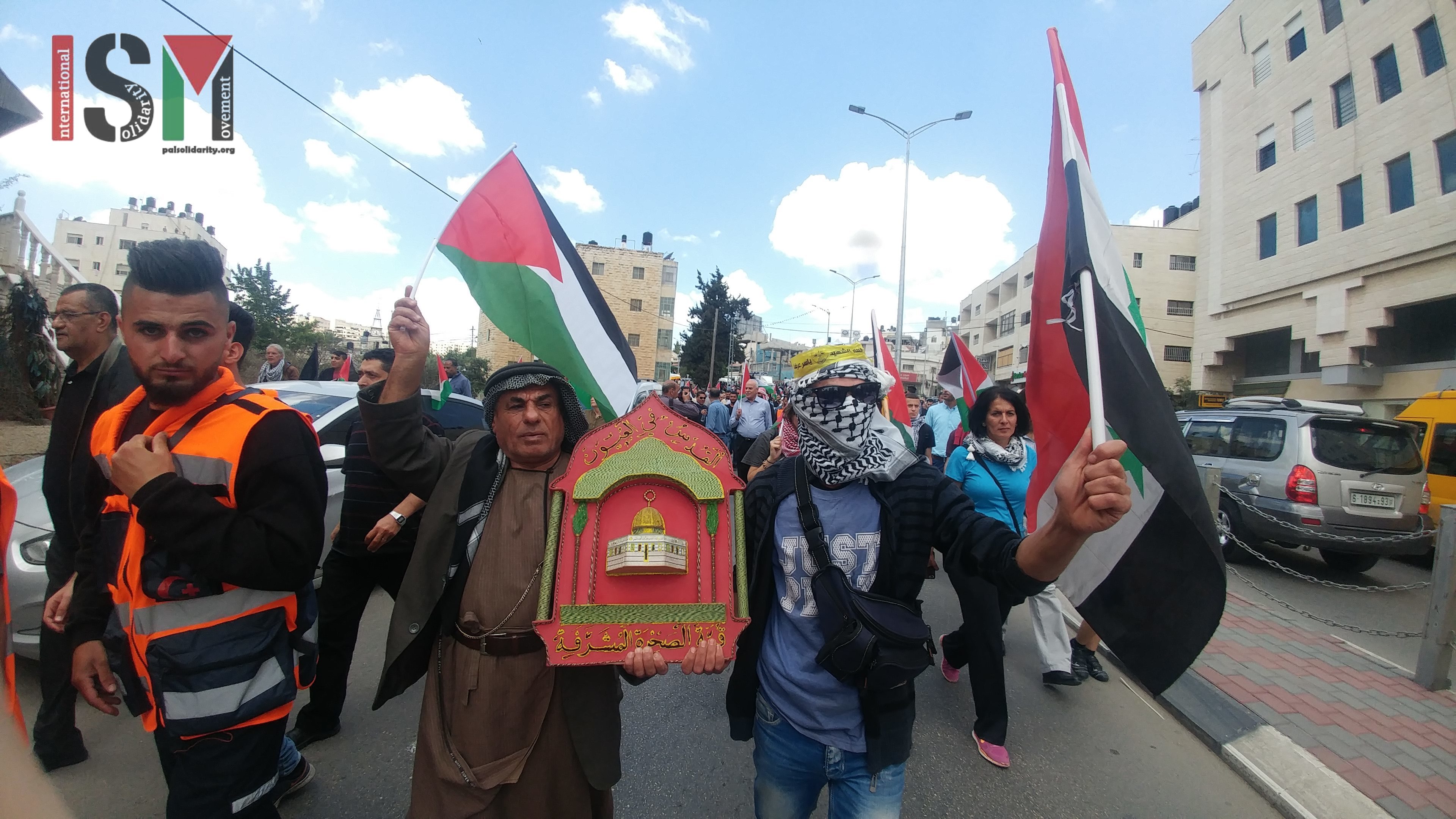Tag: Ramallah
-
Protestors in Ramallah honor Razan Al Najjer, young medic executed by Israeli forces in Gaza
3rd June, 2018 | International Solidarity Movement, Ramallah team | Ramallah, occupied Palestine Yesterday at midday, hundreds of protestors marched through the streets of Ramallah to mourn the execution of Razan Al Najjer, the 21-year-old medic who was executed by Israeli forces in Gaza on Friday. Members of the Palestinian Medical Relief Society from across…
-
Many injured in Beit El protest on 15th May in commemoration of the Nakba
Palestinians marched from Arafat square in Ramallah at 11am this morning 15th May to the DCO checkpoint near the illegal settlement of Beit El to confront Israeli forces. At around 12PM there were over 1000 protestors. Israeli forces fired excessive amounts of rubber coated steel bullets, tear gas, sponge tipped batons and reportedly also used…
-
“We witnessed at least 40 Palestinians dropping to the ground from tear gas inhalation”
On Monday the 14th of May at 11am, thousands of Palestinians gathered in Arafat Square in Ramallah and proceeded to march to Qalandiya checkpoint to confront Israeli forces. The US embassy was officially moved to Jerusalem on this same day. Palestinians held signs and placards to assert their right of return and in remembrance of…


